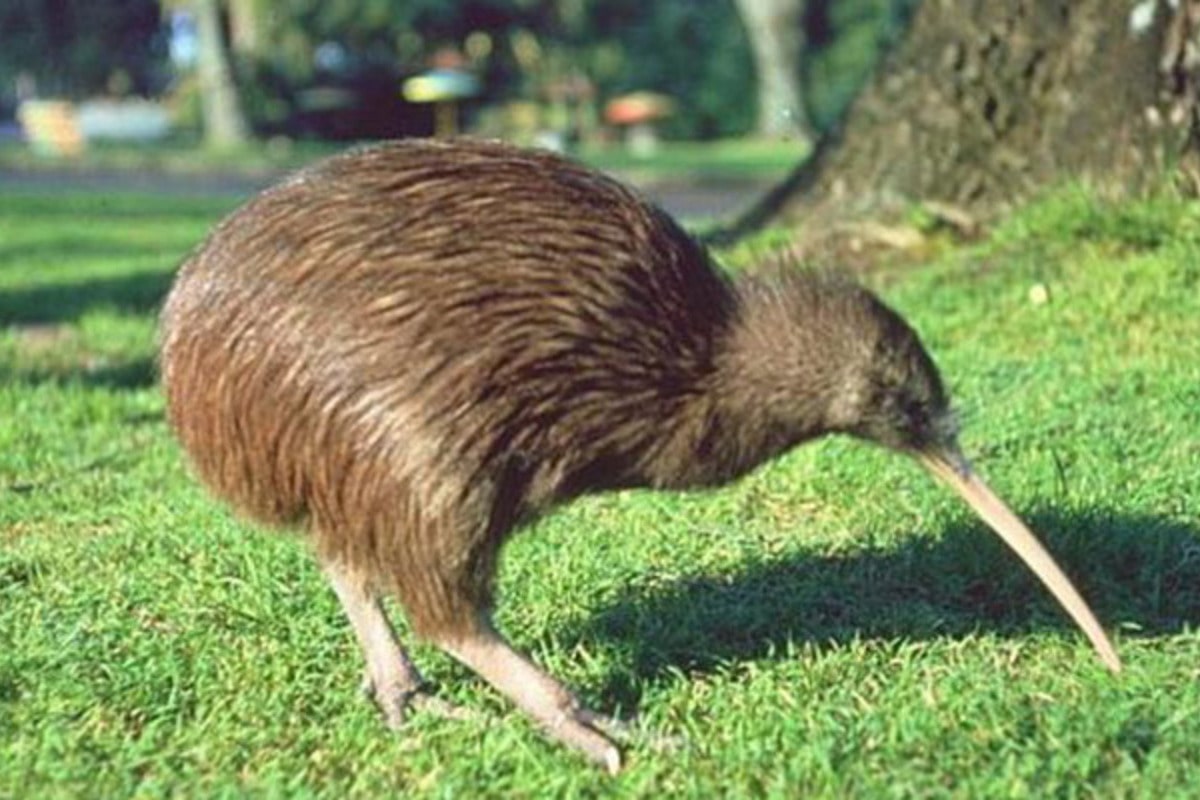New Zealand kiwis are remarkable creatures that astonish scientists and captivate travelers with their uniqueness. Although they are birds, their appearance and behavior make them resemble mammals more than feathered animals. These flightless birds are deeply rooted in New Zealand’s identity and culture, serving as powerful national symbols. In this article, you will discover interesting facts about New Zealand kiwis you might not have known before.
- Kiwis are nocturnal birds that live a secretive lifestyle and become active mostly at night. Their eyes are adapted to low light, and their primary sensory tool is a long beak with sensitive nostrils at the tip. This allows them to detect the smell of food hidden beneath the soil.
- Despite being birds, kiwis are completely incapable of flying. Their wings are extremely small and hidden under dense, fluffy feathers. Because of this, they look more like mammals than traditional birds.
- Kiwis have an exceptionally well-developed sense of smell, which is rare among birds. They can locate larvae, worms, and insects buried in the ground using scent alone. This makes them some of the best natural foragers in the avian world.
- A female kiwi lays an egg that can be up to 20 percent of her body weight. Relative to body size, this is the largest egg of any bird species in the world. Before laying the egg, the female often stops eating for several days due to the strain on her body.
- Incubation is typically the responsibility of the male. He stays in the nest for more than 70 days, maintaining the correct temperature without the female’s help. This role reversal is quite rare among birds.
- Kiwi body temperature is about 38 degrees Celsius, which is lower than that of most birds. This is another trait that brings them closer to mammals. Their slow metabolism also explains the prolonged development of their egg.
- Kiwis have a highly developed sense of hearing and touch, especially around the beak. Their feathers feel more like fur, lacking the rigid central shafts typical in most birds. This helps them move silently through the forest underbrush.
- Kiwis mainly inhabit damp forests, but they are also adaptable to other environments such as grasslands and scrublands. They dig burrows or find natural shelters in the ground. This behavior provides protection from predators.
- On average, kiwis are 35 to 45 cm tall and weigh between 1.5 and 3.5 kilograms depending on the species. There are five main kiwi species, each with its own habitat and conservation status. The rarest is the Okarito brown kiwi.
- Kiwis are monogamous and often stay with one partner for life. Pairs can remain together for years, sharing territory and nesting duties. This kind of long-term bond further enhances their similarity to mammals.
- Kiwis have strong, muscular legs that allow them to run quickly and dig efficiently in search of food. They can travel long distances at night while foraging. In case of danger, they use their legs to kick as a defense.
- In the wild, kiwis can live up to 25–30 years. In captivity, they may live even longer when provided with proper care. That is an impressive lifespan for such small birds.
- One of the biggest threats to kiwi populations is introduced predators such as cats, dogs, stoats, and ferrets. These animals prey on kiwi eggs, chicks, and even adults. Because of this, all kiwi species are under some form of conservation protection.
- The New Zealand government and conservation groups are actively working to protect kiwi populations. Sanctuaries have been created where predators are controlled, and kiwis are bred in special facilities. These efforts help support population recovery.
- Kiwis are national symbols of New Zealand. New Zealanders are often informally called “Kiwis”, a term they embrace with pride. Images of the bird are found on souvenirs, official emblems, and logos throughout the country.
- In Māori culture, the kiwi holds special significance. In traditional legends, these birds are associated with the night, the forest, and spiritual realms. They are sometimes viewed as guardians of natural harmony.
- Kiwis have almost no tail, and their body is rounded like a ball. This shape helps them retain warmth and stay camouflaged among the forest floor. Their brown or greyish feathers blend easily with soil and leaf litter.
- The unique characteristics of kiwis attract scientists from around the world. They are studied as an example of evolutionary isolation and adaptation to a ground-dwelling lifestyle. Kiwis have become iconic subjects of biological research.
- Kiwis take a long time to reach sexual maturity. Some individuals do not begin breeding until they are 3 to 5 years old. This slow development makes it harder to restore wild populations.
- Kiwi chicks hatch fully feathered and are able to forage for food independently almost immediately. Parents provide little to no care after hatching, which is unusual for birds. As a result, chicks are especially vulnerable to predators.
These incredible and fascinating facts about New Zealand kiwis highlight how extraordinary these birds are in the natural world. Kiwis are not just rare animals but true biological marvels that deserve attention and protection. Their isolated evolution, remarkable behaviors, and unique traits make them one of the planet’s most unusual inhabitants. These interesting facts may inspire you to explore more about New Zealand’s wildlife and its remarkable feathered treasures.





